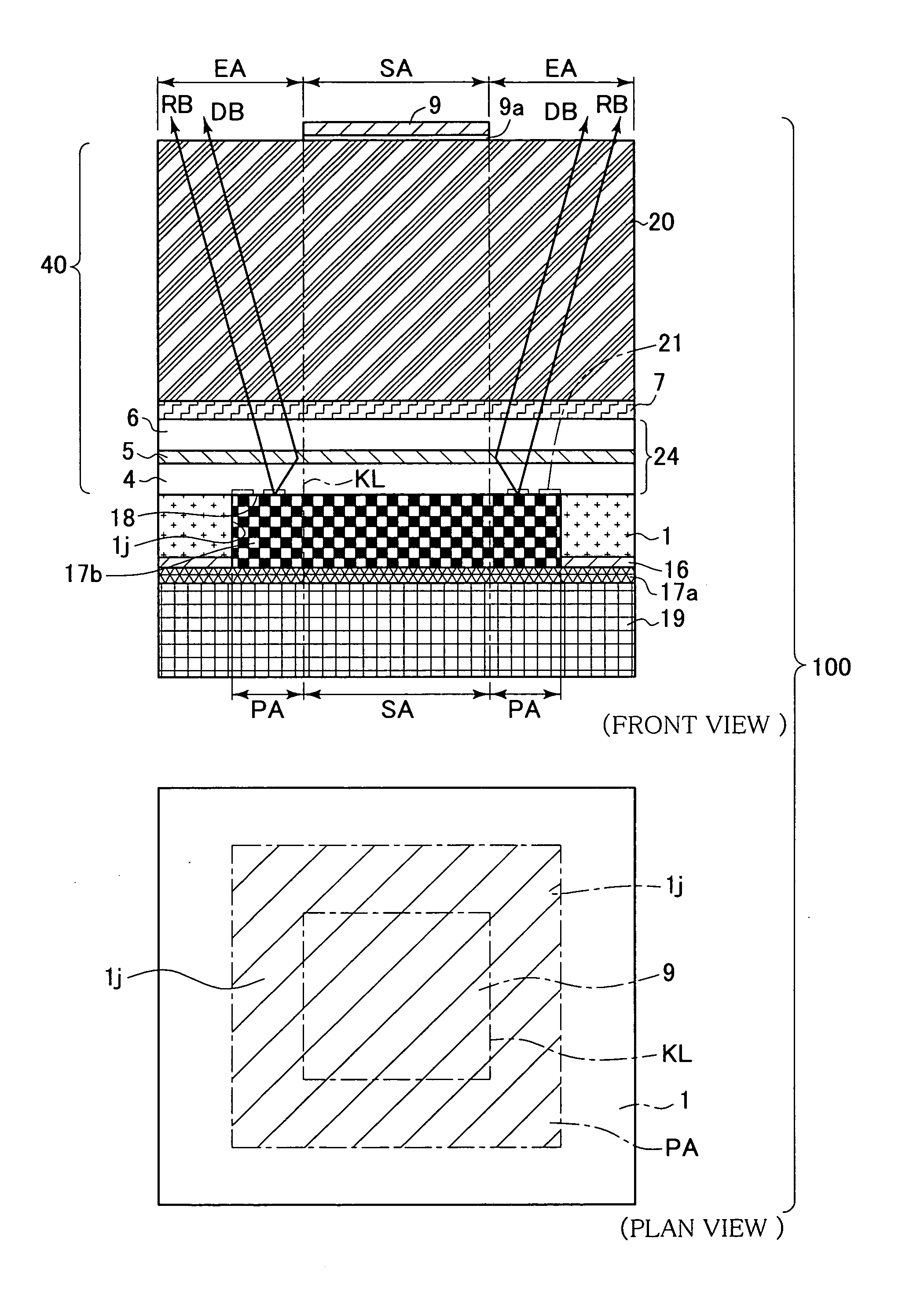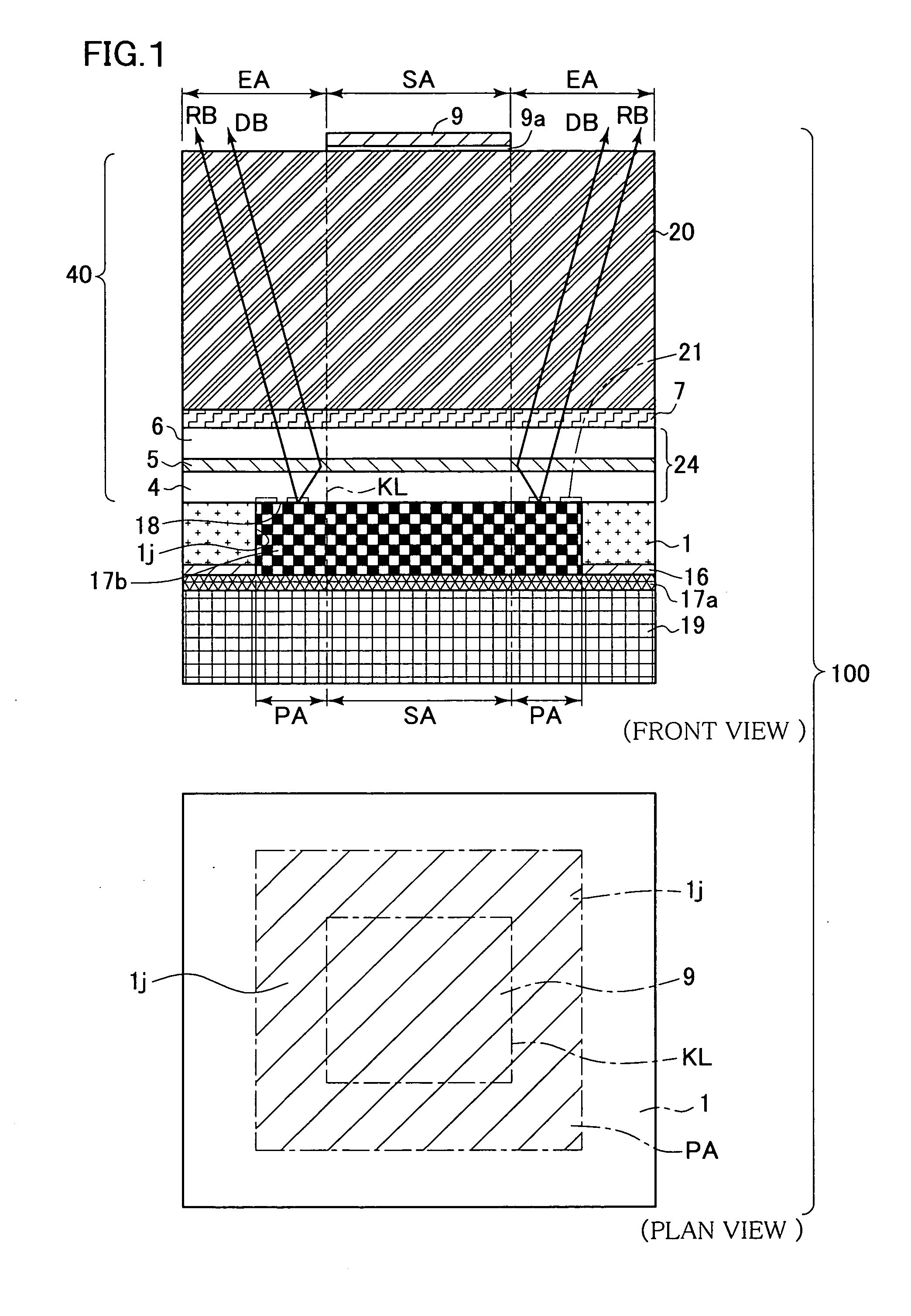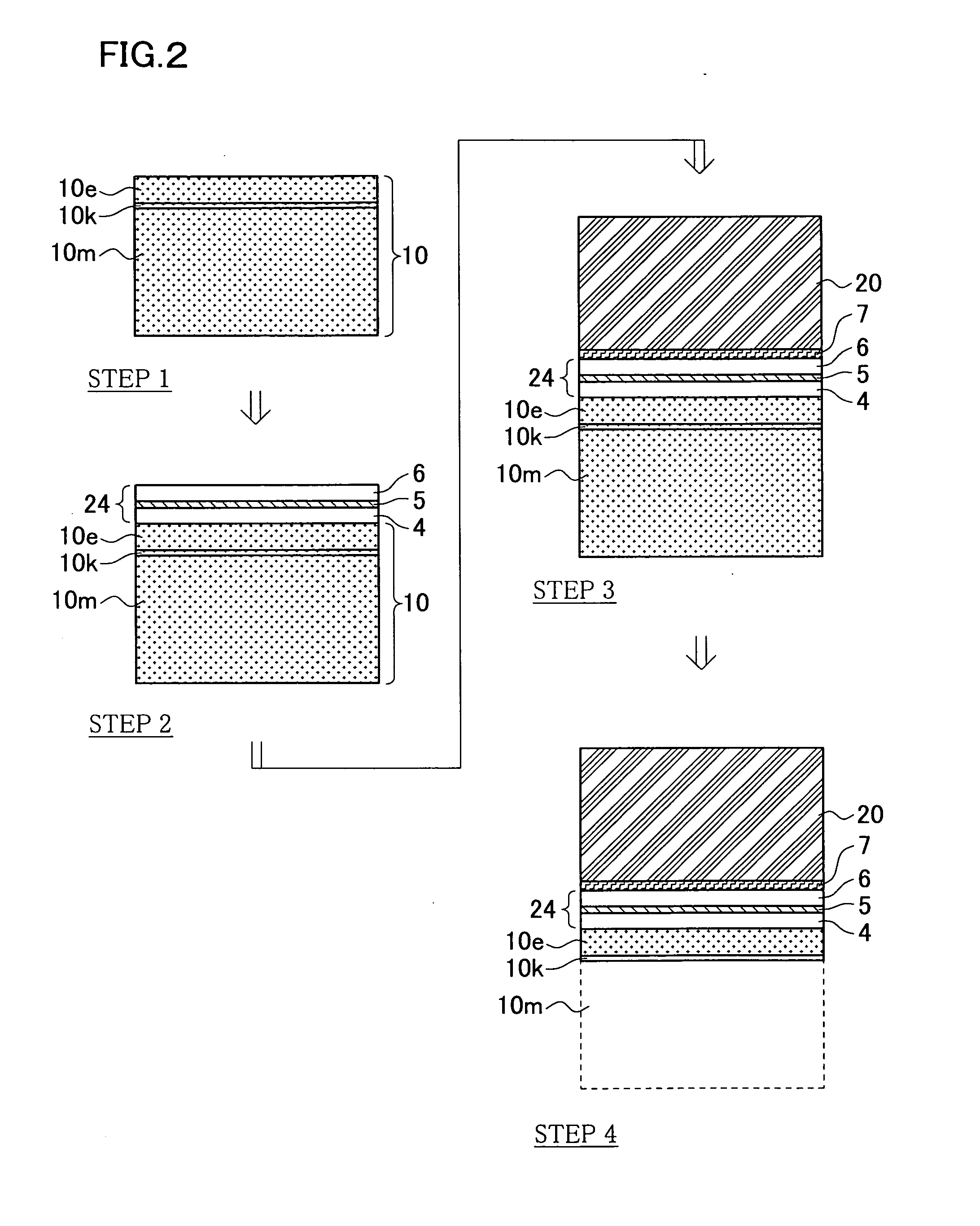Light emitting device and method of fabricating the same
- Summary
- Abstract
- Description
- Claims
- Application Information
AI Technical Summary
Benefits of technology
Problems solved by technology
Method used
Image
Examples
first embodiment
[0117] A mode of carrying out the first embodiment of this invention will be described below referring to the attached drawings.
[0118]FIG. 1 is a schematic drawing of a light emitting device 100 as one example of the first embodiment. The light emitting device 100 has a main compound semiconductor layer 40 having therein a light emitting layer portion 24, formed on a first main surface of a residual substrate portion 1. A main light extraction surface EA is formed on the first main surface side of the main compound semiconductor layer 40, and a light-extraction-side electrode 9, through which emission drive voltage is applied to a light emitting layer portion 24, is formed so as to cover a part of the first main surface of the main compound semiconductor layer 40. An opening 1j, as the cut-off portion opened on the second main surface of the residual substrate portion 1, is formed by partially cutting off the residual substrate portion 1, wherein a part of the residual substrate po...
second embodiment
(Mode A)
[0136]FIG. 11 schematically shows a light emitting device 1100 as an example of the second embodiment of this invention. There are many aspects common to those in the light emitting device 100 shown in FIG. 1, so that paragraphs below will explain only differences reside therein. That is, the aspects other than those described below are configured similarly to as in the light emitting device 100 shown in FIG. 1, so that the explanation of the first embodiment will be applied herein, rather than repeating the detailed explanations. Common elements are given with common reference numerals. The light emitting device 1100 has the main compound semiconductor layer 40, having therein the light emitting layer portion 24, epitaxially grown on the first main surface of the sub-substrate 10e (see FIG. 12). The main light extraction surface EA is formed on the first main surface side of the main compound semiconductor layer 40, and the light-extraction-side electrode 9, through which...
third embodiment
[0161] Paragraphs below will explain the third embodiment of this invention, referring to the attached drawings. FIG. 26 schematically shows a light emitting device 2100 as an example of the third embodiment of this invention. There are many aspects common to those in the light emitting device 100 shown in FIG. 1, so that paragraphs below will explain only differences reside therein. That is, the aspects other than those described below are configured similarly to as in the light emitting device 100 shown in FIG. 1, so that the explanation of the first embodiment will be applied herein, rather than repeating the detailed explanations. Common elements are given with common reference numerals.
[0162]FIG. 26 schematically shows the light emitting device 2100 as an example of the third embodiment of this invention. In light emitting device 2100, the main compound semiconductor layer 40 having therein the light emitting layer portion 24 is epitaxially grown on the first main surface of t...
PUM
 Login to View More
Login to View More Abstract
Description
Claims
Application Information
 Login to View More
Login to View More - Generate Ideas
- Intellectual Property
- Life Sciences
- Materials
- Tech Scout
- Unparalleled Data Quality
- Higher Quality Content
- 60% Fewer Hallucinations
Browse by: Latest US Patents, China's latest patents, Technical Efficacy Thesaurus, Application Domain, Technology Topic, Popular Technical Reports.
© 2025 PatSnap. All rights reserved.Legal|Privacy policy|Modern Slavery Act Transparency Statement|Sitemap|About US| Contact US: help@patsnap.com



